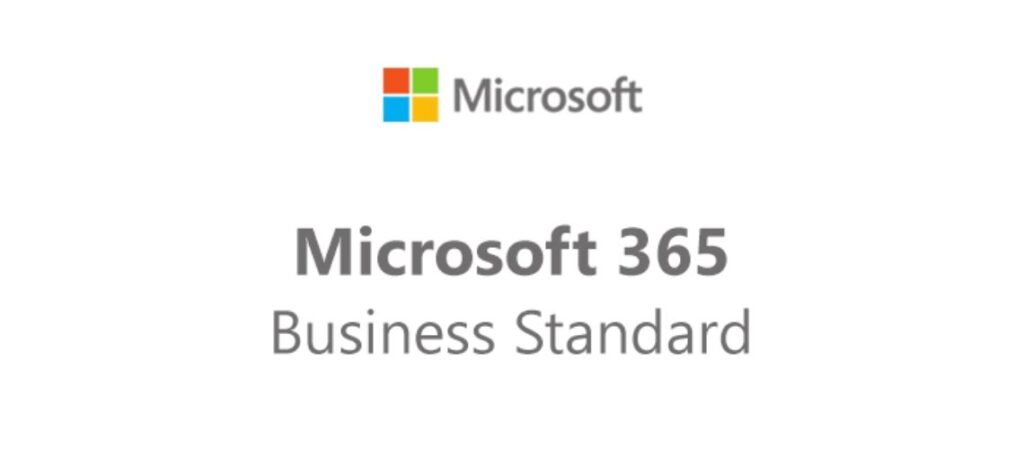Transform Data into Insights
Organisations of all sizes know their data is valuable for the future of the business. The challenge is how to realise its full potential as a strategic asset. How do you generate foresight rather than hindsight?
Data has long been the fuel of our digital era. However, we have seen the exponential generation of it over recent years as our use of digital platforms and devices has increased, generating more of it and different types.
We now have more data than we can manage effectively using traditional analytic techniques. By 2025, the world will have approximately 175 zettabytes of data at its disposal. That is 175 trillion gigabytes. However, this milestone will not be around for long as the next milestone surpasses it.
And, of course, it is not just the amount that is significant. Due to the greater variety of types, organisations can now collect data and capitalise on it.
Thankfully, significant advances in analytic technologies can now deliver superior levels of actionable insight in real-time and pre-emptively. These give the ability to react swiftly to fast-changing market dynamics and create new business models.
As early as 2016, consultants at Keystone found that a mature data and analytics strategy was a magic ingredient for outperforming competitors. For example, this includes nearly double the operating margin and up to $40k more revenue per employee.
The enterprises that transformed more digitally were generating an additional $100 million in operating income each year on average.
What do data-driven organisations achieve?
We believe every aspect of an organisation benefits from a robust data-driven culture. Harvard Business Review recently found that data-driven transformations can deliver a 54% increase in revenue and profit. Moreover, they can improve customer satisfaction by 62% and a 44% faster time-to-market.
How do they do this?
Data and analytics can help build a greater understanding of the customer experience. As a result, this enables you to turn insights into improvements in real-time.
Better data also drives optimised business transformation, for example, process and technology improvements. Furthermore, you can identify future areas of growth, innovation and opportunity. It can even generate enough insight to help you build entirely new business models that meet future customer needs.
The pandemic supports this vision. No organisation is immune to a crisis nor completely resilient. But companies with increasingly advanced digital capabilities have proven they adapt faster and more advantageously to changing markets and customer needs.
Furthermore, there appears to be high awareness about the benefits of becoming data-driven. In 2019, Harvard Business Review found that 91% of global executives believed data and analytics were essential for successful business transformation. That indicates becoming data-driven is no longer a nice-to-have but an integral component of competitive advantage.
What are the challenges?
Naturally, there are challenges to building a data-driven organisation.
The role of the Chief Data Officer has changed dramatically over recent years, and we could not possibly cover all your fast-expanding list of priorities. But we believe these are the most pressing challenges at the moment.
First, how do you generate an accurate picture of your organisational data risk and how you should be using the data. For that, you need to understand the volume, variety, and how discoverable it is. Therefore, this demands an exhaustive engagement and assessment process.
You also need to identify and integrate siloed data and teams. According to the Harvard Business Review, 55% of organisations name this one of the biggest obstacles to their strategies. Furthermore, these are interrelated concepts. Siloed teams often create siloed data, but this also creates siloed teams.
Equally as challenging is putting the correct data architecture and tools in place so you can achieve lower cost and time-to-value. To get this successfully, you need to have IT transformation. You also need to address many issues, such as the rise of shadow IT. These employees use devices and services that are not within your digital estate.
Employees themselves can be challenging as many tend to have a poor understanding of data and analytics. They need education about the value of data and the best practice data literacy skills that make it an effective strategic asset.
All of this is additional to day-to-day requirements. For example, ensuring data is protected against the escalating threat landscape and meeting an escalating number of international policy regulations. There are also considerations about using data ethically and avoiding bias.
Naturally, the pandemic has exacerbated many of these issues. It is fair to say that becoming more data-driven may not be top of the priority list for every organisation, as they battle to build productivity and profit. However, as people increasingly using digital platforms and devices throughout this period has generated a vast amount of valuable data. Furthermore, developing insights from this would help organisations prepare for a more digitally-reliant future.
Embedding data and analytics at the heart of your organisation
So how do you embed data and analytics at the heart of your organisation? We believe that most organisations need to transform their entire operating model. And there are four pillars to achieving this successfully.
- First, build a solid data and analytics foundation with robust governance, strategy and architecture.
- You also need to enhance your decision-making intelligence by making your data as valuable as possible.
- With that in place, you can begin to capitalise on AI and machine learning to drive productivity and innovation.
- And, at the same time, you can be promoting a data-driven culture using awareness and training.
Let us look at these in more detail.
Build a solid data and analytics foundation
A solid foundation for data and analytics is the springboard for success. Focus on managing the growing scale of it.
You can see it as having three core components – governance, strategy and architecture. We look at these and cover the merits of achieving them in the cloud.
Data governance
Governance is your approach to data as a strategic asset. Good governance is the creation of policies that drive business performance and value while delivering your security and regulatory obligations. Governance should also focus on responsibly widening access to data, ensuring employability is optimised.
Data strategy
Your strategy sets out how data will support your core business activities. It also states how you intend to generate a return on investment from your initiatives. Whereas governance will have some standard requirements, the strategy will be unique to your organisation and its objectives.
Data architecture
Also unique to your organisation will be its data architecture. These are the set of rules, policies, standards and models that determine what data you collect and how it is stored, used, processed and distributed. You can execute these through your chosen infrastructure, such as your networks, data centres, hosting, cloud and apps.
Go serverless
Modern data strategies and architecture are centred on the cloud because it gives you processing power with appropriate levels of security and flexibility. Pay-as-you-go computing lets you cost-effectively scale resources. Also, it helps you save on licensing and maintenance costs.
Most organisations will need to start with a hybrid approach to cover on-premises infrastructure and private and public cloud. A cloud solution can coordinate workflows and processes across these seamlessly. Ultimately, the cloud is a step towards phasing out siloed servers. It also lets you create apps in the cloud to use data better.
Working with Microsoft
Azure can give you this level of control and scalability with a single view across your hybrid infrastructure. Microsoft bases Azure around five critical architectural principles:
- Security to provide the required levels of confidentiality, integrity and availability.
- Cost optimisation to achieve business goals and ROI targets.
- Operational excellence to ensure applications run effectively.
- Performance efficiency for an excellent user experience with low maintenance costs.
- And the reliability of being able to scale out in the cloud rather than buying new hardware to scale up.
Azure offers many other benefits:
- Developers can quickly build and deploy apps to make the most of your data using the Microsoft Power Platform.
- Azure SQL Database simplifies performance management and drives cost savings for relational databases.
- Azure Blueprints let you deploy fully-governed environments, so you meet regulations such as ISO 27001.
- And for all of this and you only pay for what you use.
Case study
Azure has been a data success story for Walgreens Boots Alliance, the US and European pharmacy chain. They were keen to build a robust data and analytics foundation to ensure programmes like the Boots Advantage Card could continue to compete in the retail landscape. The challenge was how to process data from millions of point-of-sale transactions. With Azure, the company is now better equipped to model its promotional campaigns, which means it can increase revenue, help brand partners, and offer more incentives to customers.
Enhance your decision intelligence
Decision intelligence is how you make data as effective and efficient as possible. That means minimising search time and maximising its value.
Cataloguing
It is crucial to have a systematic approach to metadata – data that describes a set of data (i.e. information about information). Also, it helps you connect content to people and people to content. It is not only valuable for existing employees but also helps new employees to become productive more quickly.
Working with Microsoft
Azure Data Catalog applies metadata and lets your people contribute their insights to make it richer. Microsoft Graph and Project Cortex can also help. Graph speeds up and enriches everyday work tasks using the data in the Microsoft 365 platform. Project Cortex draws on Graph to create a knowledge network that delivers relevant topics.
Real-time insights
The primary objective of any data strategy is to turn information into actionable insight as quickly as possible. That means getting closer to your customers so you can understand reactions in real-time. And that has become increasingly important as customers have grown to expect more personalised experiences. As many as 78% of customers only respond to content if personalised to their previous engagements. Yet over 60% of businesses still struggle to personalise content in real-time.
Working with Microsoft:
You can achieve this engagement using a customer data platform like Dynamics 365. It uses AI and machine learning to create detailed customer profiles with actionable insights. It also uses Microsoft Graph to enrich the data.
Case study:
Over the last couple of years, surfwear company Rip Curl has consolidated its data to deliver instant insights to executives and retail managers. They created a data warehouse on Azure and deployed Power BI to achieve enterprise-wide clarity. For example, the data warehouse links Rip Curl’s eCommerce system to its image database. Managers can now see what customers are buying, which helps them plan where to locate stock.
Pass it to the front line
Retailers and service organisations do better when they can deliver customer insights instantly to front-line staff members. That gives your employees the power to delight customers during calls, chats, point-of-sale interactions, and when in the field.
Working with Microsoft:
For example, you can achieve this with Microsoft 365 for Firstline Workers. Sophisticated analytics generate contextual insight that helps you improve customer engagement. With Microsoft 365 for Field Service, you also get a single interface that enables agents to work efficiently with remote technicians. Work orders from email, phone and other channels show on a dashboard in real-time.
Drive productivity and innovation
AI and machine learning are the game-changers that help you drive productivity and innovation. 67% of organisations globally have already adopted it or plan on adopting it.
Become intelligence-driven
These technologies help your organisation to become more intelligence-driven. You can use AI-driven automation to detect process anomalies and suggest remediation options, enabling team members to resolve issues quicker and improve processes. Furthermore, the model gets more efficient and generates a positive feedback loop.
Working with Microsoft:
We help organisations to plot their journeys toward becoming intelligence-driven. It enables them to identify their north star – the set of business outcomes they wish to achieve and where they want to go in the future.
Case study:
An intelligence-driven solution was essential for consulting engineering firm Mott MacDonald. Its engineers can be involved in four or five major projects at any one time so, helping them to find what they need is critical. Microsoft SharePoint Syntex uses AI and machine learning to capture and tag content and then integrates with Power Automate to build workflows that leverage extracted metadata.
Automate repetitive tasks
AI and machine learning also enable you to introduce greater automation for dull and repetitive tasks such as data capture. Furthermore, this is called RPA – robotic process automation. RPA helps improve the speed at which you can prepare data and enhance its accuracy. You can train AI to sort through faster, and therefore it delivers more value. For example, McKinsey estimates that, with current technology, up to 42% of finance operations can be fully automated, and you can partly automate 19%.
Working with Microsoft:
Microsoft Power BI uses dataflows to automatically ingest, cleanse, integrate and enrich data from many different sources. Microsoft stores your data in Azure Data Lake Storage, which means multiple employees can make use of it using Azure Data Services – Azure Machine Learning, Azure Databricks, and Azure SQL Datawarehouse for advanced analytics and AI.
Automation also helps organisations cut costs and become more agile and responsive to customer needs. For example, self-improving chatbots can field customer queries, transferring customers to live agents only when needed.
Use intelligent apps
Finally, you can eradicate silos using intelligent apps. These open up data for the benefit of everyone, providing access to information across multiple systems to encourage collaboration.
Working with Microsoft:
Azure is a core integration solution because it allows you to combine many technologies. Project Cortex automatically connects and categorises organisational content into helpful topic areas. Then, it generates topic pages (like wiki pages) and cards within popular Microsoft 365 applications, such as Outlook and Teams.
Promote a Data-Driven Culture
A data-driven organisation is more than its technology. It requires organisation-wide data and analytic skills. Of course, that is much easier said than done.
Empower employees
First, make sure employees understand how important data is for their roles. Show them how they contribute to creating good-quality data, and explain the risks associated with misuse and inadequate protection. Part of this is raising awareness about ethics and bias, just as you might for bribery or money laundering.
Build your data community
Unfortunately, data can be an opaque and dry concept to communicate. Employee engagement can be more successful when you demonstrate clear examples of value delivery. Spotlighting and rewarding best practices in action can motivate employees to contribute.
Working with Microsoft:
Microsoft Teams is the perfect tool for facilitating ongoing dialogue about best practices and helping to share skills.
Develop data literacy skills
The introduction of new technology will naturally require user training, particularly in emerging technologies such as AI. You also benefit from developing role-specific training; that promotes awareness, understanding and mastery. Make sure people understand the benefits that AI can bring, such as automation and improvements in accuracy and productivity.
That said, it is worth mentioning that a recent Microsoft report on AI skills found that 68% of UK employees felt their workplace did not help them to prepare for an AI-enabled future. It is no surprise that demand for AI-related training opportunities is rising.
Working with Microsoft:
Microsoft can help. Our Learning Paths are available to everyone and focus on helping users to find training that meets their needs and preferences. For example, bite-size sessions, deep-dives, videos and much more.
We also provide presenter-led learning opportunities through our UK Virtual Training Days, and it is also worth exploring Microsoft Certifications. These formal qualifications are recognised across the industry and can help accelerate a career from any starting point.
We also provide an AI school to explore conversational AI, AI services, machine learning, autonomous systems and responsible AI. Also, the AI Business School offers six paths to help you achieve a lasting business impact. Topics cover strategy, culture, responsible AI, scale AI, and AI for business users. There are also industry-specific learning options.
“Data culture is about empowering every organisation, every team and every individual to do great things because of the data at their fingertips.” – Satya Nadella, CEO at Microsoft.
For more information about how you can get more out of your data, contact Northstar today.




